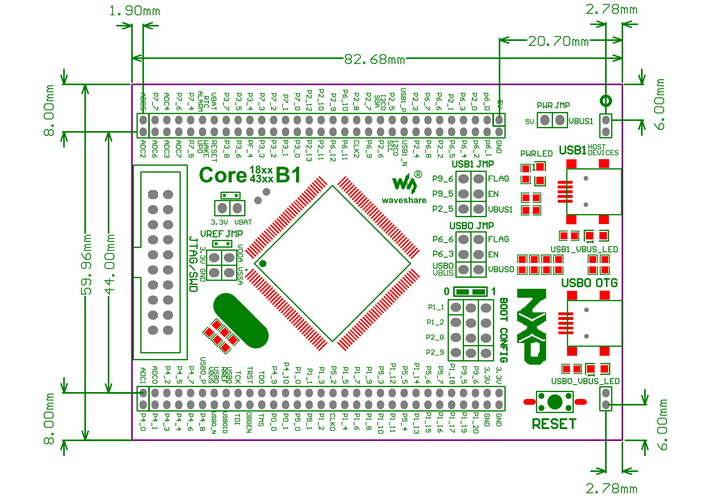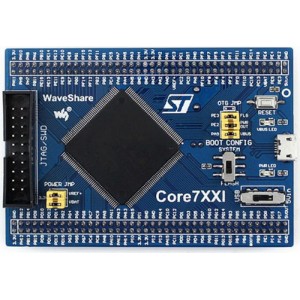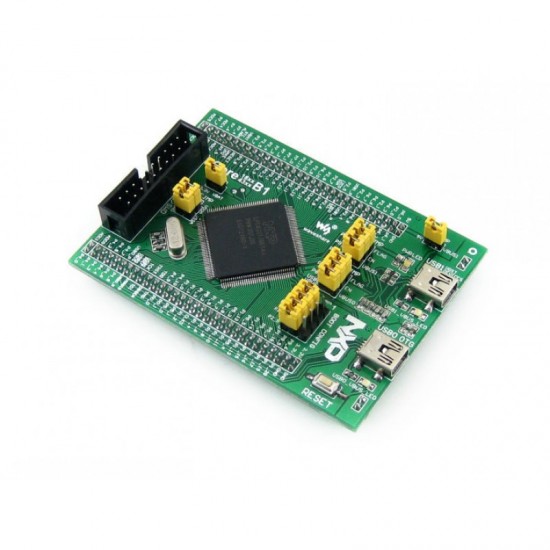
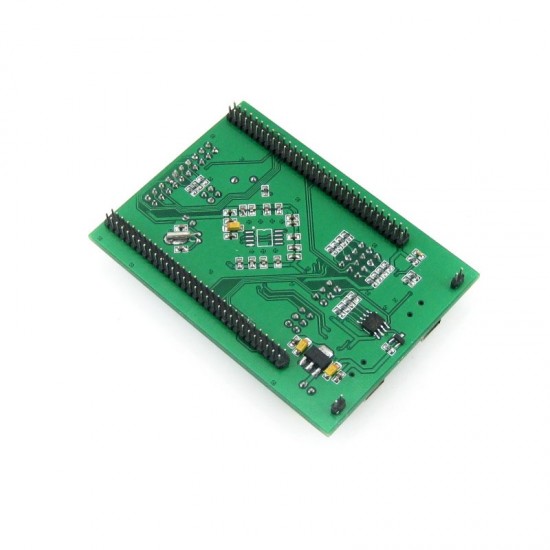


B2B GST Credit Available
- Stock: 1 in Stock
- SKU: 7310
- Delivery Time
- Bulk & B2B RFQ
Core4337, LPC Core Board
Core4337 is an LPC MCU core board that features an LPC4337JBD144 device as the microcontroller, supports further expansion.
- integrated MCU basic circuit, such as clock circuit, USB power management, USB interface, etc.
- all the I/O ports are accessible on the pin headers
- onboard JTAG/SWD programming/debugging interface
- 2.0mm header pitch design, suitable for being plugged-in your application system
- Core4337 LPC MCU board x1
- USB type A plug to mini-B plug cable x1
- Software CD x1
What's On Board
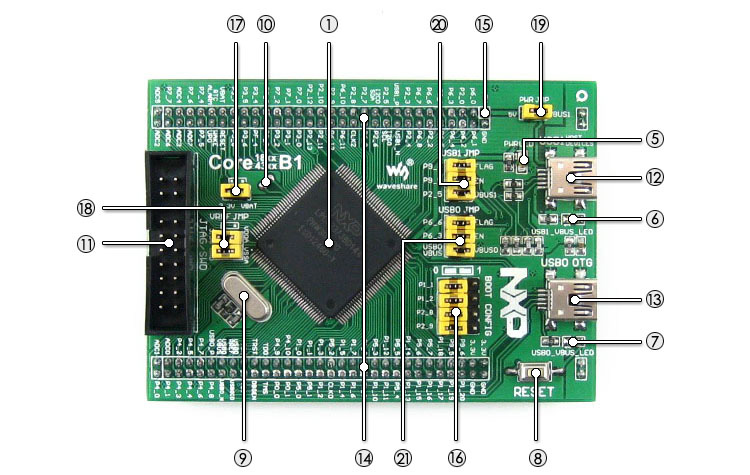
1. LPC4337JBD144:the LPC ARM Cortex-M4/M0 dual-core microcontroller:
- Core: Cortex-M4 processor, 204MHz Max
- Core: Cortex-M0 coprocessor, 204MHz Max
- Package: LQFP144
- I/Os: 83
- Memories: FLASH total 1M, SRAM total 136kB, ROM 64kB, E2PROM 16kB, OTP memory 64 bit
- Interfaces:
- 1 x SPIFI, 1 x 10/100T MAC
- 1 x High-speed USB2.0 Host/Device/OTG
- 1 x High-speed USB 2.0 Host/Device
- 1 x 550 UART, 3 x 550 USART, 1 x IrDA
- 2 x CAN 2.0, 2 x SSP, 1 x SPI, 1 x Fast-mode Plus I2C
- 1 x standard I2C-bus, 2 x I2S, 1 x EMC, 1 x SD/MMC
- 1 x PWM, 1 x QEI, 1 x 10-bit DAC, 2 x 10-bit ADC
2. AMS1117-3.3 (on bottom side), 3.3V voltage regulator
3. LM3625-H (on bottom side), USB power management device
4. QSPI FLASH solder pads (on bottom side), for soldering external Flash if required
5. Power indicator
6. USB1 VBUS LED
7. USB0 VBUS LED
8. Reset button
9. 12M crystal oscillator
10. 32.768K crystal, for internal RTC with calibration
11. JTAG/SWD interface: for debugging/programming
12. USB1 interface:
- Device mode: communicating with computer
- Host mode: communicating with USB devices (such as USB Flash Drive) through an adapter cable
13. USB0 interface, features USB OTG function
14. MCU pins expander, VCC, GND and all the I/O ports are accessible on expansion connectors for further expansion
15. 5Vin power input, power the core board from external supply (while working on USB HOST/OTG mode, a 5V power input is required)
16. BOOT configuration
17. VBAT selection jumper
- short the jumper to use system power supply
- open the jumper to connect the VBAT to external power supply, such as battery
18. USB PWR OUT jumper
- short the jumper: powered from USB1 VBUS (it's possible to provide power to the mother board via the 5V pin)
- open the jumper: powered from the mother board
19. USB1 jumper
- short the jumper when using USB1
- open the jumper to disconnect from I/O port
20. USB0 jumper
- short the jumper when using USB1
- open the jumper to disconnect from I/O port
